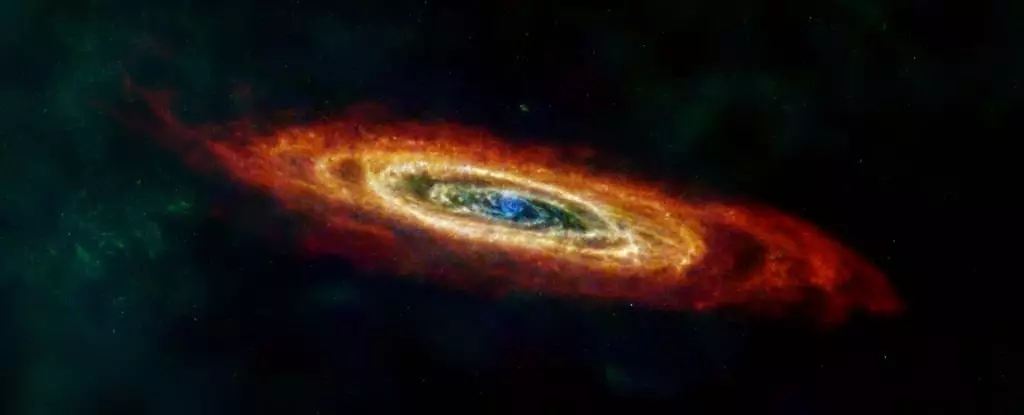At the heart of our universe lies an intricate dance of creation and destruction, particularly evident in the life cycle of massive stars. These celestial giants, often exceeding eight times the mass of the Sun, ultimately meet their end in a spectacular event known as a supernova. Through this dramatic explosion, a star sheds its outer layers, leaving behind either a neutron star or, in more massive cases, a black hole. However, recent astronomical observations reveal a remarkable anomaly—some of these massive stars may skip the explosive finale altogether, transitioning directly into black holes without the spectacular supernova display.
The standard model of stellar evolution suggests that a massive star balances the outward pressure from nuclear fusion against the inward pull of gravity. Throughout its life, it steadily converts hydrogen into helium, and as it exhausts this fuel, it enters a critical phase where nuclear processes diminish. This imbalance ultimately triggers a catastrophic collapse, leading to the star’s violent explosion as a supernova. Yet, scientists are now discovering that not all stars complete this cosmic rite of passage as expected.
Among the intriguing subjects of study in this area is M31-2014-DS1, a massive supergiant star observed within the Andromeda galaxy (M31). Initial observations of this star began in 2014, when astronomers noted an increase in brightness in mid-infrared wavelengths. For an astonishing 1,000 days, M31-2014-DS1 exhibited stable luminosity, but this changed dramatically between 2016 and 2019, when the star’s brightness plummeted without the traditional signal of a supernova explosion. This set of data sparked a deeper investigation, leading researchers to understand that the star had likely transitioned into a black hole rather than undergoing a supernova event.
Kishalay De, leading the research at the Kavli Institute for Astrophysics and Space Research, provided critical insights into this phenomenon. The star, having been born with approximately 20 solar masses, arrived at its terminal stage with only about 6.7 solar masses remaining. The observations indicated that M31-2014-DS1 may have been enshrouded by a recently ejected dust shell, a potential remnant of stellar turmoil, yet there was no detected optical outburst typically associated with supernova explosions.
The mechanics of supernova explosions are inherently complex. In the dying moments of a massive star, extreme densities in its core facilitate the conversion of electrons and protons into neutrons, creating a surge of neutrinos—a phenomenon termed neutronization. These neutrinos, prevalent throughout the universe, are known to barely interact with other forms of matter. The energy they release has the potential to generate a shock wave capable of triggering the explosive outburst during a supernova.
In the case of M31-2014-DS1, however, the neutrino shock did not revive, which led to the star collapsing under its own gravity. Researchers were able to deduce that the amount of stellar material ejected was significantly lower than what would typically occur in a standard supernova. The majority of the star’s mass, nearly 6.5 solar masses, succumbed to the gravitational pull and formed a black hole.
The Implications of Failed Supernovae
The phenomenon of failed supernovae challenges our existing models of stellar evolution and black hole formation. M31-2014-DS1 serves as a representative case of a class of stars that may not fulfill the expected pathways—a stark reminder how little we truly understand about the lifecycle of massive stars. Estimates suggest that between 20% and 30% of massive stars may conclude their existence as failed supernovae, a revelation emphasizing the need for further investigation and observations.
Only one other potential example of a failed supernova, N6946-BH1 in the Fireworks Galaxy, has been confirmed since its discovery in 2009. This red supergiant underwent similar behavior to M31-2014-DS1, transitioning into a faint infrared signal instead of a luminous explosion. These findings indicate that astronomers may have encountered only the surface of a much deeper and more intricate cosmic reality involving black hole formation.
The revelations surrounding M31-2014-DS1 and other failed supernova candidates force us to revisit the narratives we’ve constructed around stellar death and black hole genesis. As more evidence mounts, it encourages astronomers to broaden their understanding not just of supernovae, but also of the fabric of the universe itself and the mechanisms governing its birth and demise. Ultimately, the continued exploration of these enigmatic stellar phenomena holds the promise of unveiling additional layers of cosmic storytelling hidden within the stars.


Leave a Reply